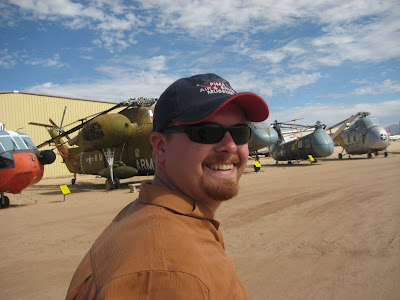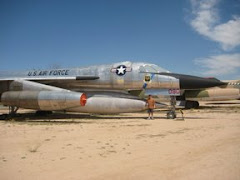In the early morning hours of March 29, 1943, in Central Washington State, two B-17F bombers fell earthward, taking their crews to the next life. These two crews were training at Ephrata Army Air Base. Although training losses were a common and unfortunate side effect of the ramped up pilot training required to destroy the Axis Powers in the air, it was not common, however, for two aircraft to go down within such a short time from the same base in unrelated incidents. That cold morning, though, that is exactly what happened.
2nd Lieutenant Derek Bovingdon, pilot of B-17F #42-29500, took off from Ephrata Air Base at 0037. The bomber’s mission was to complete Second Air Force Model Mission #8, which included 1 hour landings, 1 hour of night dry bombing runs on PDI, and an hour of instrument practice. The bomber was instructed to check in every 30 minutes. They did three times. The last was at 240AM, when the bomber checked in. It began to give a position report when the signal cut-off. Despite ground stations attempts, the ship could not be raised again.
At 0052, Captain Robert Stafford took off in 42-5313 to conduct a weather flight. Ceiling was between 4000 and 6000 feet. He landed at 0210, and reported no malfunctions with the aircraft. At 0254, Lt. Furch took of with #42-5313 to do some local flying.
At 0300 hours, control advised all ships to stand by for a weather up-date. All ships but 42-29500 and 42-5313 acknowledged. At 0310 hours an explosion was observed from the tower, approximately 5 miles NE, which caused the base to call all aircraft back for a landing.
Later, base personnel found that only 42-5313 had crashed 5 miles NE. It was not until April 2 that searchers found 42-29500 approximately 16 miles East of Ellensburg, or about 40-5 miles SW of Ephrata. It had hit a ridge about 40 feet from the top. The propellers had cut furrows for about 250 feet. It hit, bounced over the top and the majority of the wreckage ended up on the opposite side of the ridge.
The official opinion was that the pilot did not know where he was, and that staying under the 3300 foot ceiling caused him to plow into the mountainside which was a few feet above 3300. Also, he did not have permission to be in that particular air space. The entire crew died. There was no sign of parachute usage.
Bad luck was rampant that night. At 0310, Marvin Furch apparently had some difficulties. His aircraft, 42-5313, disintegrated in a fatal collision with the ground. Second Lieutenant Furch took off at 0254 for a planned 1 hour and thirty minute flight. About 0310 the control tower operator, Sgt Dunmire, observed an explosion in the vicinity of the base ammo dump. It was finally found that this was an aircraft and not the base ammo dump. Only 5313 was in that crash and only small pieces of her were found.
Pilot error was determined in both incidents. Lt. Furch’s error was in his transition from contact to instrument flight or vice-versa.
On the up side, both accidents saw such ramifications as having the co-pilot retain one type of flight profile while the pilot transitioned to the next. 42-29500 made it necessary for pilots to take better account of their navigation and know where they were.
(Resources for this post were the accident reports of #42-29500 and #42-5313, both B-17Fs from Ephrata AB)
Saturday, April 26, 2008
Thursday, April 24, 2008
Atlas E in Washington State
A friend and I visited this site a couple years ago. It remains secure. That is, it is padlocked and the water table seems to have invaded somewhat, but other than that it is an interesting site...somewhat out of my range, but we were on a roadtrip.
The Atlas E was a liquid fueled ICBM that needed to be fueled before it left the ground. It was stored horizontally and empty. It was only raised vertically prior to launch. The launch door was about 40 X 100 feet, and about two feet thick. It rolled aside and the missile was raised, fueled, and fired. A thing of beauty.
Feel free to leave a comment or question. I will answer as well as I can.
The Atlas E was a liquid fueled ICBM that needed to be fueled before it left the ground. It was stored horizontally and empty. It was only raised vertically prior to launch. The launch door was about 40 X 100 feet, and about two feet thick. It rolled aside and the missile was raised, fueled, and fired. A thing of beauty.
Feel free to leave a comment or question. I will answer as well as I can.
Wrecks in Washington
This site is meant to cover and discuss aircraft wrecks in Washington State. It is meant to fill a niche that I have found to be wide open. There are sites devoted to wrecks in Arizona, California, Oklahoma, and Maine...not to mention numerous others. Not one seems to find Washington very interesting. I do. I live in Washington and since gas prices have risen SO high, I think it high time someone take up the torch and discuss this subject.
I will probably try to focus on the accident reports I have gotten concerning the wrecks in question. I have several. Over the last 8 months or so, I have been slowly gathering information about crashes and their causes here in the state of Washington. I have consciously concentrated on those occuring in Central Washington. Extreme Eastern Washington is out of short driving range (2 hours) as is much of Western Washington.
Eastern/Central Washington was an Army Air Force training hub. There was Army Air Force activity at the following locations (others will doubtlessly follow, and I may eventually move this to an actual website, rather than a blog) Yakima County Airport, Ephrata Army Air Base (AAB), Moses Lake AAB, Walla Walla AAB, and Ellensburg Airport. Ellensburg still has taxiways that were made in the 1940s.
WWII gave way to a considerable military presence uring the Cold War. Nike Missile sites, Atlas E sites, Titan Missile sites, and a SAGE site. All of these in Central Washington.
There are numerous resources to help with the task of Washington State Air History, and at a later date, I hope to list some of these.
My name is Jim Huffman. I am a history teacher and aircraft buff. I volunteer at the local air museum and I have visited several of the air museums in the West.

For information, though my resources are at this time comparatively meager, please leave a comment and an e-mail address and I will respond.
Subscribe to:
Comments (Atom)






